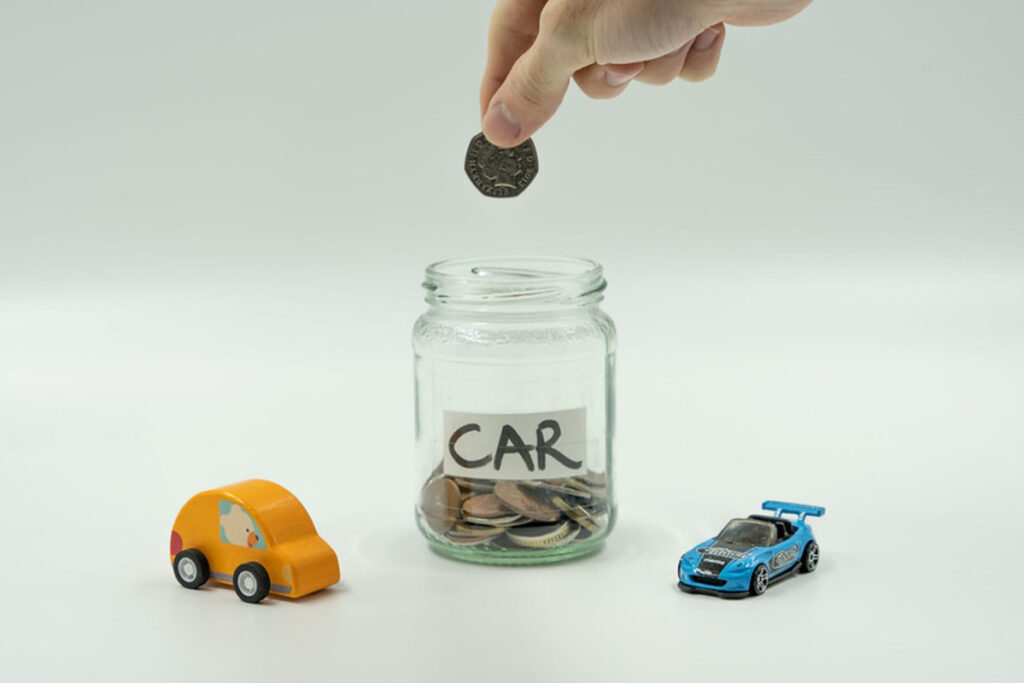Learning how to save money as a teenager for a car involves a handful of financial disciplines. Buying a car of your own may take forever if you don’t get the hang of savings. Indeed, the goal of acquiring a car could help you learn money management skills that would pay off in the long run.
So, let’s get to the tested and proven methods for saving enough money for your first car as a teenager. Mind you, these steps work great not just for acquiring a car but also for other financial goals like starting a business or paying for college.
So, let’s get right to tips on how to save money as a teenager for a car.
1. Have a Clear Cut Goal
As we mentioned earlier, having a well-defined goal for your savings campaign is important. It often serves as motivation when the will to continue saving starts to flag. Don’t save just for fun; it seldom ends well. Do you know what’s likely to happen when you save without a clear goal in mind? Binge spending, that’s what.

Interestingly, you might have other things in mind for which the money is earmarked. So, when saving for multiple things at once, always define the priority of each item at the onset.
ALSO READ: How to Save Money: 13 Simple and Effective Tips
2. Make Budgeting a Habit
It can be pretty difficult to save when you don’t work with a budget. Also, if you somehow manage to squeeze out some savings out of your income without maintaining a budget, inconsistencies will be prevalent in your savings.
So, cut down expenses and pause to create a budget today, not tomorrow. It will help you tidy up your act financially. Here’s how to go about it: track all your income sources and know exactly how much you earn per time. Also, identify your recurrent expenses like bills, groceries, and gifts. Above all, always ensure your monthly spending is significantly lower than your income.
3. Whittle Down All Unnecessary Expenses
At any given time in our financial lives, there are a handful of expenses that we know deep down that we can do without. If you are serious about buying that car, you would look for such expenses and cut them out of your budget.
Be mindful to avoid impulsive buying, particularly when shopping online. Pack your lunch; it costs less and is more healthy than always buying takeaways. Also, you won’t fall dead if you stop that daily habit of buying coffee. That’s enough, by now we’re sure you get the point.
4. Challenge Yourself to Secure Other Income Sources
Don’t limit yourself to one income source. Look for other income sources that could easily fit into your schedule. For example, you could deliver newspapers at 4 a.m., run a YouTube channel, or freelance online. You’re in the best position to identify what works best for your itinerary.
5. Stash Your Booty in a High-Yield Savings Account
Open a savings account before the money you are saving starts piling up and spilling out of the piggy bank. Preferably, ask to open a high-yield savings account.
We recommend high-yield savings accounts because they offer one of the best interest rates on bank savings, about 10.5% pa. Besides, it prevents your cash from losing value in the face of inflation.
Key Factors to Consider When Buying Your First Car
Now that you’ve gotten the roadmap of how to budget and save money toward your first car, there are a couple of things to figure out before buying one.

1. How Much Does the Dream Car Cost?
It needs no saying that this is one of the things to consider when setting your savings target. However, you may eventually have to settle for a car you can afford more than what your ‘dream’ suggests.
2. The Cost of Driving Lessons and a Licence
Your parents may have already taught you how to drive, say during grocery runs. However, If you don’t drive yet, it is essential to factor in the cost of taking lessons. Also, it would be best to find out how much it costs to take driving tests and qualify for a license.
3. Whether to Buy a Used or New Car
The choice of buying old or new comes with significantly different cost implications. New cars are more expensive and have relatively more expensive running costs, like the insurance premium. On the contrary, used cars are cheaper but have higher mileage and are prone to frequent breakdowns and repairs.
ALSO READ: 8 Budgeting Apps for Teens
4. Where to Buy the Car From
For a teenager who has saved money to buy a car, consider carefully the pros and cons of picking one of the many available car vendors.
Some options are buying from a private seller or a car dealership. Private sellers seldom have anything but used cars. However, some dealerships specialize in either used or new vehicles.
5. How Will You Pay For and Maintain the Car?
While outright purchase could be a plausible way to buy a car, using credit may pay off in the long run as it boosts your credit score. So, whether you are paying with cash, a loan, or a hire purchase, it will determine the seller you patronize and, in some instances, the kind of car you eventually buy.
Now that we have it all thrashed out, it is time to set the big picture of your dream car in focus. Check websites that post jobs for teens, and start saving today as you earn. That car might be yours shortly.

